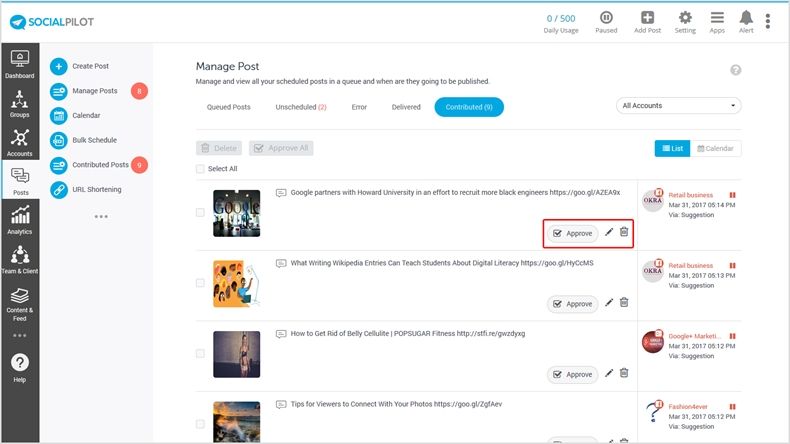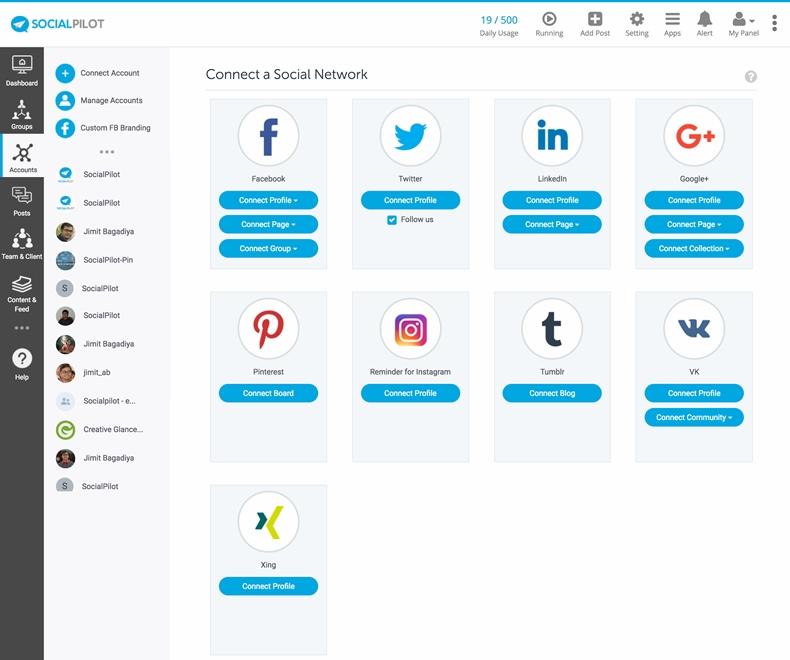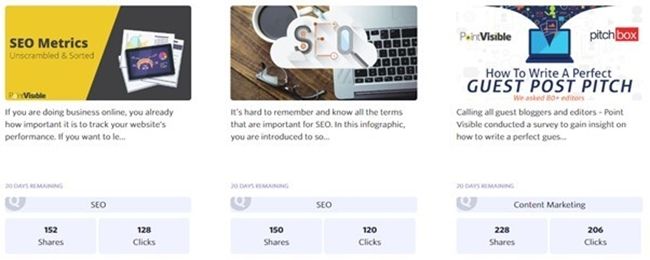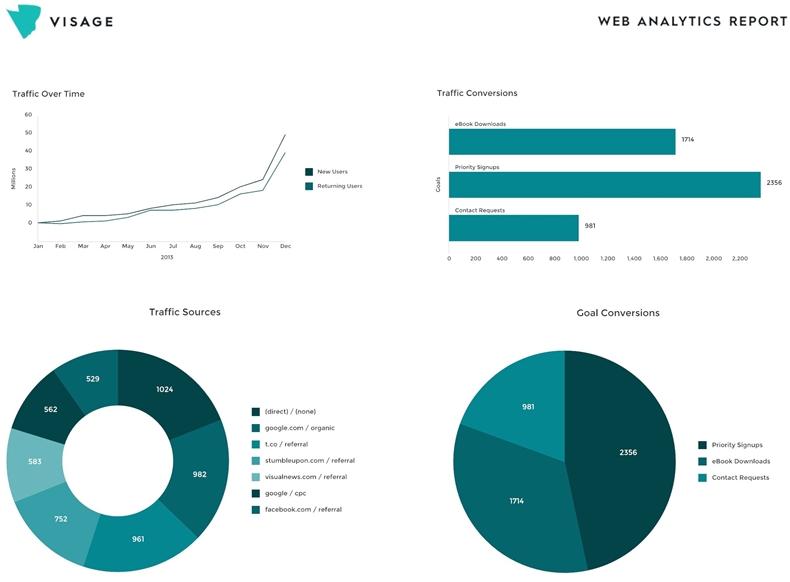Businesses that harness the power of social media look for tools that can build audience and attract sales.
But which tools come to your mind when you need a solution? Obviously, the most popular ones. Yet, there are a lot of others, not as well-known, that are still amazing tools.
In this article, you’ll discover five of the top lesser-known social media tools that can improve your campaigns.
1. SocialPilot
Even though this tool has been around for a while, it’s not as popular as some of the names you usually hear in relation to social media management—at least, not yet.
But that doesn’t mean it’s not a very powerful tool. Here are some of the ways that you can use it.
To start with, you can automate your social media updates efficiently with various publishing and scheduling features (including bulk scheduling) for most major social networks and even for Google My Business posts.
SocialPilot also allows you to add team members, give them different roles and responsibilities, and allocate different social media accounts to them to manage. Because it has a simple user interface, new members can easily get on board the platform and carry out necessary tasks without wasting time.

SocialPilot supports the main social media networks and platforms that businesses focus on:

In addition to features that you’d expect from a social media management tool, SocialPilot has some great extras, such as tools to help you curate content effectively (and RSS feed automation), social media and Google My Business analytics, and a browser extension to share content on your social channels on the go.
2. Quuu
To run your social media pages effectively, one of your main worries is finding regular content for updates. With Quuu, you can all but eliminate that concern.
Quuu helps you to find content related to your industry that will attract your audience’s attention. Quuu’s service is unique in that your curated content pieces are handpicked, in the sense that humans vet these pieces of content before they’re recommended for your social media pages.
Then, there are Pods by Quuu, a feature that allows you to share your pieces of content with other interested users. You can either join a pod or create one yourself and ask blogger and influencer friends to join.
Another feature of Quuu you’ll fall in love with is the Quuu Promote:

All you do is submit your piece of content to Quuu. If it’s found relevant and valuable, it will be sent to Quuu users in your niche as a suggestion for their social media pages, helping you generate more social shares (and traffic!).
What kind of results can you get with Quuu Promote? By promoting 170 blog posts on the platform, A Better Lemonade Stand got 71,532 shares and 43,066 clicks through to its pages.
3. Influential
If you’re trying to build a large audience on social media, an influencer can help you achieve that goal more quickly. However, you have to select the right influencer for your brand.
That is a challenge most businesses face: Which influencer fits your business style and can help you gain the ideal followers?
That’s the question Influential answers for businesses. With the use of artificial intelligence, Influential studies your social media profile to understand your ideal audience.

It then uses then information to recommend influencers who fit your brand. And it gets better: The more Influential studies your social media profile and followers, the better it can recommend suitable influencers for your campaigns.
Influential also allows you to measure the ROI of your influencer marketing campaigns by tracking both online and offline attributions related to creator content.
4. Visage
Images and other graphics properties help to boost your social media performance. For instance, adding images to your tweets can result in up to 150% more retweets.
But creating images is easier said than done. Not every business can afford to hire a designer, which is how Visage comes to the rescue.
It provides design templates, graphics, and a huge library that can supply the images you need for your social media campaigns. You can also import an image and use Visage’s click-and-drag functionality to edit it to your taste.
You can get your professional image within minutes even if you have poor design skills. With Visage, you can give your presentations a more appealing look and make it easier to get your message across to your audience.

If you already use popular tools like WordPress, HubSpot, Buffer, and Trello, Visage integrates with them. Also, if you run a team, it allows you to collaborate with your team to design branded communications.
5. Hashtracking
Hashtags are a way to promote a product or a social media campaign. They are an essential part of some of the biggest social networks in the world—Instagram and Twitter—while other major social networks are also catching on and starting to leverage hashtags more and more (such as Facebook and even LinkedIn).
But how do you track and measure the effectiveness of these hashtags and hashtag campaigns? Or the results you’re getting from these campaigns?
When your hashtag goes viral or fails to take off, you want to get all the details to inform your next step in your social media campaigns. Hashtracking helps you to do so on Twitter and Instagram.
![]()
Apart from tracking the current performance of a hashtag, you can also see the data on that hashtag for the previous 30 days. If you want to see how a hashtag has performed in comparison with another, you can compare the performance of up to six hashtags at the same time.
Through your tracking, you’re also able to find social media influencers who are using your hashtag. That’s a handy feature, since it can help you find and connect with social influencers in your niche/industry who are using the same hashtags as your target audience.
Analytics is the biggest selling point of this tool, however. Hashtracking can give you an overview report of a hashtag, including details such as the number of tweets, activity summary, sources of the hashtag, engagement, and peak use.
![]()
Analytics are an incredibly important part of any social media campaign (or, rather, any digital marketing campaign) because analytics tell you exactly what works and what doesn’t work. With that information, you can improve your strategy on the go and learn from your wins and mistakes to develop better hashtag and social media campaigns in the future.
Conclusion
Even though these five tools might not be as well-known as some of the big names in the industry, they are truly powerful, offering features that are must-have for a successful social media strategy.
